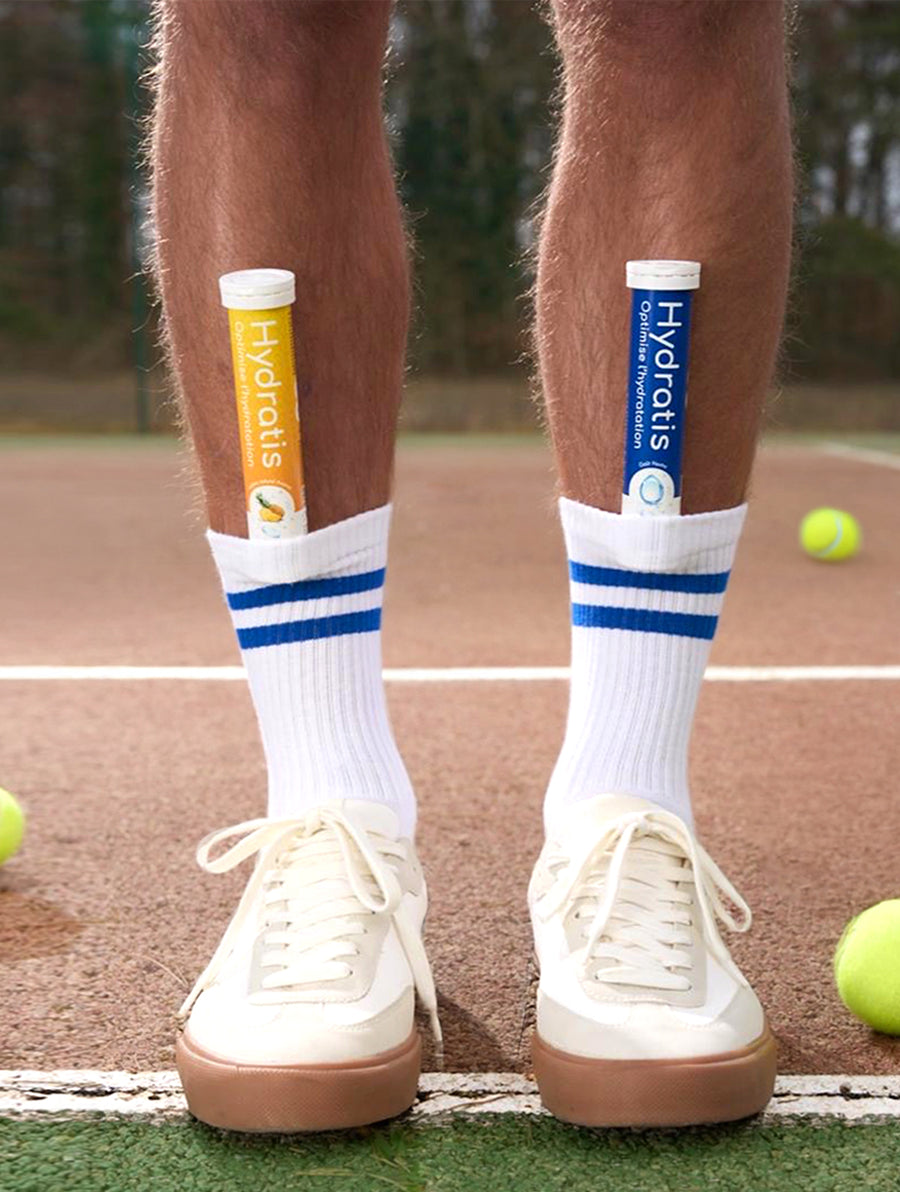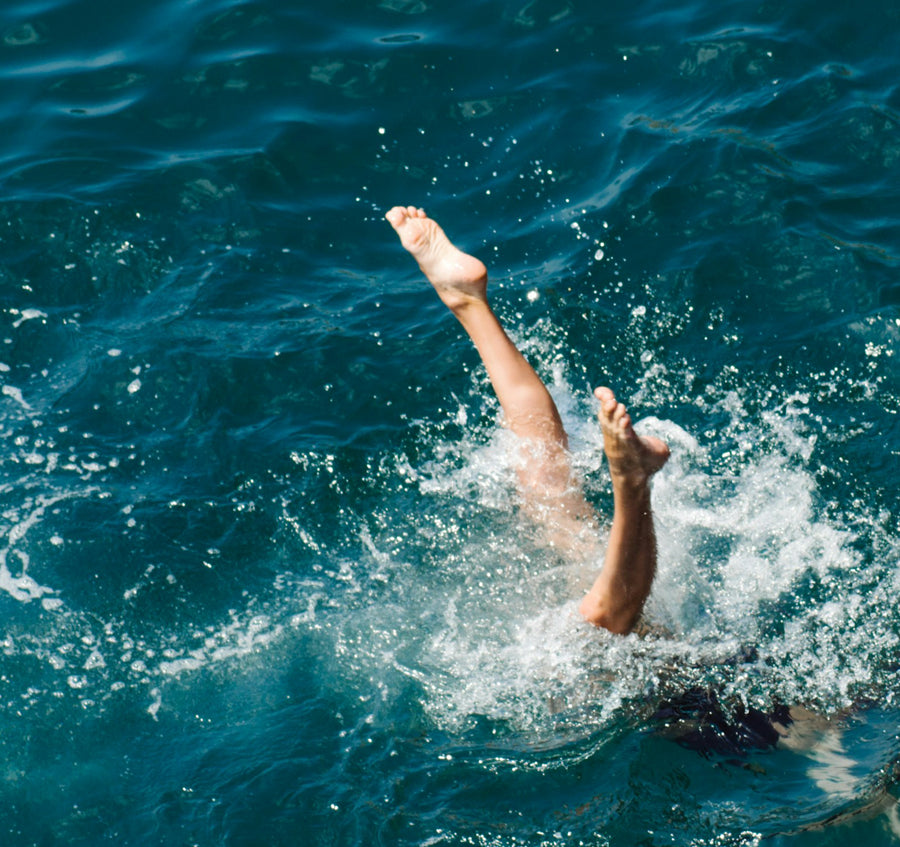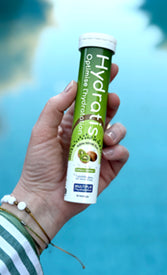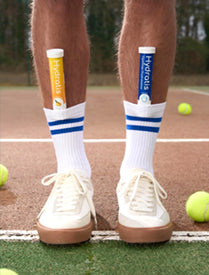After 42.195 km , your body, put to the test, needs time to recover . Post-marathon recovery isn't optional : it's essential to ease muscle soreness, replenish your energy stores, and prepare for a safe return to training ! Discover how to structure this key stage to come back stronger.
Why is recovery after a marathon essential?
An effort that leaves its mark: pain, fatigue, inflammation
During a marathon, your muscle fibers undergo micro-tears, and your glycogen stores are heavily depleted. This is why, at the end of the race, you feel intense fatigue and stiffness in your legs.
To repair damaged tissue, your body triggers an inflammatory response, produces an excess of free radicals, and muscle damage biomarkers reach their peak. It is the combination of these physiological reactions that leads to the onset of delayed onset muscle soreness , the infamous muscle aches, 12 to 48 hours after running.
Post-marathon syndrome: what is it?

For some runners, the post-race period isn't limited to muscle soreness. They may experience mental fatigue , a drop in motivation , anxiety, or even a feeling of emptiness . This is referred to as... post-marathon syndrome or " post-marathon blues ".
This phenomenon is thought to be the result of several factors:
- a temporary increase in cortisol, the stress hormone;
- a drop in endorphins and dopamine , linked to pleasure and motivation;
- a sudden drop in adrenaline , accumulated throughout the race.
Some describe a feeling of passing sadness or depression linked to the return to calm after a long period of preparation.
The good news is that this phase is transitional and normally passes with rest and new perspectives and objectives.
What are the risks if recovery is neglected?
Resuming your running sessions too soon , without allowing your body time to recover , is a serious mistake. You can aggravate pain and increase the risk of injury : tears, stress fractures, or tendinitis.
Furthermore, your immune system could weaken further . Underestimating this phase not only compromises your health but also your future performance . Instead of progressing, you risk overtraining, leading to a loss of motivation and persistent fatigue. Hence the need for a well-structured recovery plan .
Immediately after arrival: the crucial first hours
Drink plenty of fluids to rehydrate the body
Once you cross the finish line , you must drink within 30 minutes. Water hydrates you, but it does n't replace the minerals lost through perspiration. Opt for water rich in electrolytes or Coconut water . Drink in small sips every 10 to 20 minutes. Too much at once can cause digestive problems.
Replenish energy reserves (carbohydrates + proteins)
To restore glycogen stores and optimize the repair of damaged muscles, Carbohydrates and protein are essential. Within 30 to 60 minutes of arriving, consume a sports recovery drink or a snack (bars, smoothies, fruit, yogurt, nuts, etc.). Follow this later with a complete meal such as rice, chicken, and vegetables.
Gentle stretching, slow walking, and returning to calm
Don't lie down immediately. Walk for about 10 to 15 minutes to stimulate blood circulation . Breathe deeply and allow your body to gradually return to a normal rhythm. Two hours later, gently stretch your quadriceps , calves, and hamstrings to relax them without putting them under strain again.
Cryotherapy, cold showers: useful or not?
Cold can be an ally in reducing inflammation and pain . Ice baths, cold showers, Whole-body or localizedcryotherapy : you have several options. However, the effects vary depending on the individual and the duration/intensity of exposure. After a marathon, the most accessible option is a cold leg bath (10 to 12 minutes at 12°C) or localized ice packs for 10 to 15 minutes. Whole-body cryotherapy is effective, but it is offered in specialized centers.
Day-by-day recovery: what to do during the first week?
Days 1 to 3: Active rest and care
The first 72 hours are crucial. Your priority should be active rest .
Move around a little to avoid stiffness, but avoid any strenuous activity . A walk of a few minutes is enough. No aerobic exercise or running.
Try to get enough sleep by maintaining a regular sleep schedule as much as possible. Nutritionally , prioritize foods rich in antioxidants and vitamin E (berries, fruits, nuts, green vegetables, etc.). The omega-3 fatty acids found in oily fish (salmon, sardines, mackerel) also help reduce inflammation. If you can, give yourself a light massage to soothe sore areas.
Days 4 to 7: Gradual resumption of gentle activities
From the fourth day onwards , you can introduce low-intensity activities such as yoga, Pilates, and gentle mobility exercises. These disciplines will help reactivate blood circulation and relax your joints without impact. If you experience pain , stop and rest .
Week 2: Getting back in shape without rushing
Resumption of light training (jogging, cycling, swimming)
The second week marks a gentler transition. Light jogging, cycling, or swimming are perfect for maintaining cardiovascular fitness without putting stress on the joints . Alternate activities to avoid monotony.
Listen to your body's signals: aches and pains, motivation, fatigue
If your legs are still sore or you don't feel up to it, don't push yourself. Everyone recovers at their own pace: some get back in shape quickly, others need more time. Don't compare yourself to others. If you 're still feeling tired, it's better to wait two more days than risk injury.
Incorporate mobility sessions and light strengthening exercises.
To prepare your body for resuming intensive training, start with progressive muscle strengthening . Opt for equipment-free exercises : squats, static lunges, glute bridges. Add mobility movements such as hip rotations and chest openers.
Additional care and techniques for better recovery
Massages and self-massages
A professional massage , 48 to 72 hours after the event, can help release deep tension and improve circulation, provided it is appropriate and not too firm. Alternatively, you can use a massage roller or ball to do it yourself.
Osteopathy: what does a specialist say?
Some runners consult an osteopath after a marathon to realign their posture and relieve tension. Scientific evidence on the effectiveness of this practice is limited. It may help you feel better, but it is not a substitute for medical advice in case of pain.
Nutrition and supplements: focus on magnesium, protein, and electrolytes

You need protein to promote muscle fiber repair and magnesium to reduce fatigue and prevent cramps . If your diet is balanced , supplements aren't essential. Otherwise , electrolyte tablets are a useful way to replenish sodium, potassium, and magnesium lost through sweat.
Hot bath, sauna, electrostimulation...: use with discretion
Hot baths and saunas promote relaxation, but don't directly accelerate muscle recovery. Electrical muscle stimulation may provide relief for some athletes, but evidence of its effectiveness is limited. Use these methods as a complement, not as a primary treatment.
And then what? Get back to training and plan your next race
How long should I wait before seriously resorting to legal action?
Generally, allow 2 to 3 weeks before resuming structured training . For some, getting back in shape can take up to a month . You should adjust this timeframe to your own feelings and health status.
Set new goals (half-marathon, trail run, marathon coming up)
Once you 've recovered , set yourself a new goal : a half-marathon, a trail run, or the next Paris Marathon, for example. But take the time to consolidate your gains and assess your areas for improvement.
Post-marathon review: analyze, learn, progress
Take a moment to analyze your journey from preparation to race day: what went well? What difficulties did you encounter ? This exercise will help you improve and approach your next marathons with even more confidence.
FAQ – Your questions about post-marathon recovery
What is the recovery time after a marathon?
Allow 10 to 30 days depending on your level, habits and how you feel.
What can I do to recover properly after a marathon?
You should prioritize sleep, good nutrition, hydration, and a gradual return to physical activity.
What is post-marathon syndrome?
It's a state of physical fatigue and low morale that some runners experience after competition. It manifests as sadness, a lack of motivation, muscle aches, and a feeling of emptiness after achieving a goal.
What advice does an osteopath have for an effective recovery?
An osteopath often recommends rest, gentle mobility, and regular follow-up to prevent injuries after intense training or competitions.
When can you schedule another competition after a marathon?
Wait at least 6 to 8 weeks before embarking on another demanding race, to allow your body time to regenerate.
Bibliography
Abbott. (2023). Post-Race Blues: The Neuroscience of Marathon Recovery . https://www.abbott.com/corpnewsroom/nutrition-health-and-wellness/post-race-blues-the-neuroscience-of-marathon-recovery.html
Coudreuse, J.-M., Dupont, P., & Nicol, C. (2007) . Delayed onset muscle soreness. Journal of Sports Traumatology, 24 (2), 103–110. https://doi.org/10.1016/j.jts.2007.03.006
American College of Sports Medicine, Sawka, MN, Burke, LM, Eichner, ER, Maughan, RJ, Montain, SJ, & Stachenfeld, NS (2007). American College of Sports Medicine position booth. Exercise and fluid replacement. Medicine and science in sports and exercise, 39(2), 377–390. https://doi.org/10.1249/mss.0b013e31802ca597
Saat, M., Singh, R., Sirisinghe, R.G., & Nawawi, M. (2002). Rehydration after exercise with fresh young coconut water, carbohydrate-electrolyte beverage and plain water.Journal of physiological anthropology and applied human science,21(2), 93–104. https://doi.org/10.2114/jpa.21.93
Naderi, A., Rothschild, JA, Santos, HOet al.Nutritional Strategies to Improve Post-exercise Recovery and Subsequent Exercise Performance: A Narrative Review.Sports Med55, 1559–1577 (2025). https://doi.org/10.1007/s40279-025-02213-6
Sport-Orthèse. (February 17, 2025). Cryotherapy: all you need to know about the benefits of cold on the body. Sport-Orthèse. https://www.sport-orthese.com/blog/cryotherapie-tout-savoir-bienfaits-du-froid-n347
Ministry of Social Affairs and Health. (2013). An overview of osteopathy [Leaflet]. https://sante.gouv.fr/IMG/pdf/depliant_osteo_bat_2_.pdf






